Habit Change: Our New Year’s Resolution
HABIT CHANGE: OUR NEW YEAR’S RESOLUTIO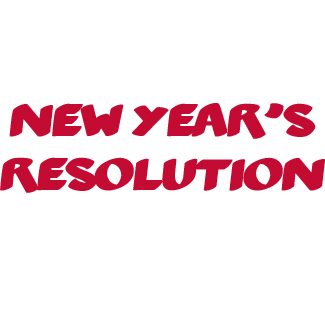 N (ISSUE 110)
N (ISSUE 110)
By Diane Gold
Habit change, New Year’s resolutions, success. That’s what we want. That’s what is possible. Whether we want a total make-over or a tiny change, now’s a motivating time to make it. This begins with a tiny plan, 1 step and repetition. Along with this, an inventory of our own personal foundation is in order.
OUR FOUNDATION
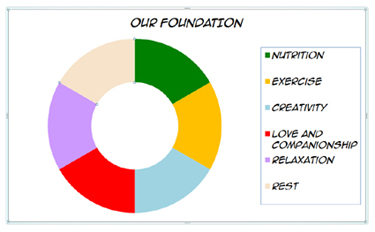 We, as humans, have a variety of requirements. To be at our best, we need a balanced infrastructure to support us. The simple version of this concept is that we need great nutrition, a little exercise, a way to be creative, love and companionship, daily relaxation, enough rest and a place to do this in. Each of us has a little bit different make-up and needs more or less in each of these areas, depending upon who we are.
We, as humans, have a variety of requirements. To be at our best, we need a balanced infrastructure to support us. The simple version of this concept is that we need great nutrition, a little exercise, a way to be creative, love and companionship, daily relaxation, enough rest and a place to do this in. Each of us has a little bit different make-up and needs more or less in each of these areas, depending upon who we are.
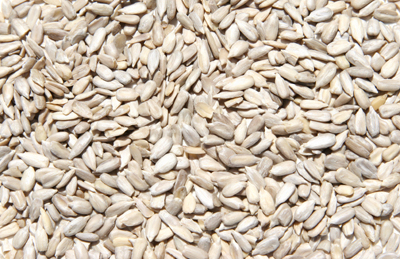
GREAT NUTRITION – this means getting most of our enzymes, vitamins, minerals, phytonutrients from food, not supplements, with little or no pesticide present. Hard to do in an age where we use genetically modified seeds that live through toxic pesticide sprays so that we get maximize crop yield for maximum profit, without regard for the damage the sprays and the genetically engineered seed do to our bodies.
DAILY EXERCISE – this physical fitness can be anything from stretching to walking to climbing stairs to bicycle riding.
CREATIVITY – being creative can range from telling a joke to writing a letter to mixing an album. When we communicate with others in a way where we are expressing our own uniqueness, we are creating.
LOVE AND COMPANIONSHIP –
we are social creatures. Reaching others is truly important for us.
DAILY RELAXATION – although we see the need in others, sometimes we leave out this all important area of what’s necessary to keep us whole. We would never think of skipping our daily hygiene. In the same way, we need to keep our insides clean through some type of calming activity. Daily.
ADEQUATE REST – can anyone relate to having gotten too little rest? I start to fall apart most quickly without just the right amount of rest. And that makes sense, since we are like machines with electrical signals for our brain and our heart. We need to recharge ourselves regularly and completely to work well.
Sometimes, we take these beauties for granted. They are important to upkeep so that our habit change, New Year’s Resolution, whatever it is, will have a leg to stand on, so to speak.
THE NEW YEAR’S RESOLUTION
No matter what we want to change, if our foundation is solid; we will do well. This means if we monitor our nutrition, exercise, creativity, companionship, relaxation and rest; we have a super chance of breezing through our task. Our New Year’s resolution may, in fact, be in one of the areas mentioned.
ONE-POINTED FOCUS
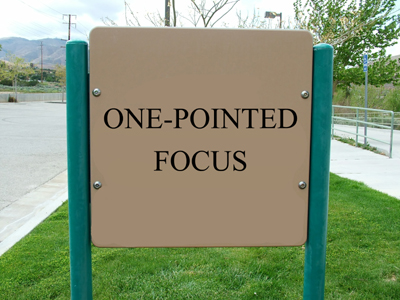
As with any goal, it’s important to apply one-pointed focus and go in one direction. Once 1 step is taken, then another comes. So often, we attempt 2 things at once before we have an understanding of one path. So nothing gets done because our attention is not exclusive. Here’s another factor that might help.
PERCEPTION
The way we perceive things makes the difference between bewilderment and understanding, collapse and success. There is only one small difference between the two. It’s our perception, whether we are victims or conquerers. When we realize that we are replacing a new and wonderful action in the place of the old action that we wish to change, we can focus on that new action and all its joys, rather than becoming victims who are depriving themselves of something.
If we have the capacity to think, we have the capacity to be our own heroes. Make sure to leave the victim mindset in a small box outside the door. There’s always opportunity to go get that box later. Leave it outside for the first 21 days of the habit change, and let’s see how that goes. It’s only 21 days. If it’s not necessary to get it after the first 21 days, leave it for another 21 days, etc., etc.
If we are not sure what that one New Year’s Resolution is going to be, here are several action steps that may help.
ACTION STEPS
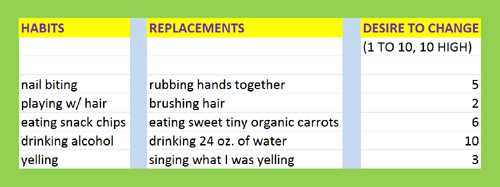
1) Write down 5 habits that you wish to change. (Don’t worry if you don’t have 5.)
2) Next to each, write down a replacement action you could do in place of the action that is your habit. It can be fun, creative, unrelated, as long as it is immediate and available to you within 10 seconds of getting your original cue.
3) Next to that column, on a scale of 1 to 10, write down how much you wish to change each.
4) Use the 1 to 10 guide to decide which habit will be your New Year’s Resolution. Keep judgment out of it. This is for you, alone. If one is more pressing than others, but everyone thinks you should change another, go with your gut. It’s your New Year’s Resolution, and it’s your habit. And you know better than anyone else what it feels like inside you.
5) Now that you have picked 1 of the 5 habits you have written down, decide whether the replacement action is accessible to you 24 hours a day. If it’s not, pick another one. If what you picked requires eating food, drinking water; make sure that you can carry the food and water with you at all times.
6) Get ready to start by buying any food or bpa free water container you will need and preparing it now, since your plan starts January 1, 2014 for your Happy New Year.
SPECIAL EMPHASIS
The plan must be in place before you move a muscle so you will be ready when the cue (the trigger that makes you want to take the old action) shows up. That’s what 6) is all about.
7) Tell a friend, storekeeper or some online social media connection about your decision. Keep talking about your resolution behavior on a regular basis. It will encourage follow through.
8) Do it! You can, you know!
CONCLUSION
1 step at a time will get us changing whatever habit we choose. We can make a list. We can manage to have water or carrots with us all the time. We can go to a public grocery store or library and tell an employee there what we’re doing. The employee will listen. This declaration usually helps us stay on track.
Most important, though, is to be consistent with keeping up with the new behavior, and, if this involves food or drink, prepare it. We need to be ready so that the first time and the 100th time our body or brain tells us to act out the old habit, we are ready with the pre-planned all, new behavior.
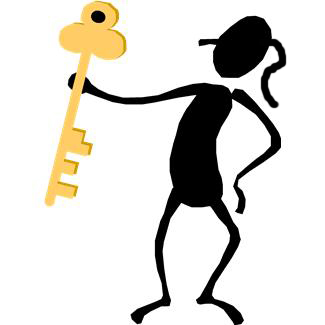 To succeed at our New Year’s Resolution Habit Change, repetition is key. Whatever our new behavior, it must be repeated for a good 3-week period as a humble beginning. I just read an article saying how 21 days to change a habit is a myth, and 66 days is more realistic. If you’re like me, it can take 90-180 days to take hold, and repetition is still necessary on a daily basis after that.
To succeed at our New Year’s Resolution Habit Change, repetition is key. Whatever our new behavior, it must be repeated for a good 3-week period as a humble beginning. I just read an article saying how 21 days to change a habit is a myth, and 66 days is more realistic. If you’re like me, it can take 90-180 days to take hold, and repetition is still necessary on a daily basis after that.
Bottom line, a strong foundation is extremely helpful when changing a habit. It makes the efforts that will surely be difficult, a little less difficult and absolutely possible. Wish you an extra bit of energy for your resolution! Follow the steps and see if it works. We’re all together.
SPECIAL NOTE ABOUT MAX-NEEF’S HUMAN DEVELOPMENT MODEL
It should be noted that Alfred Manfred Max-Neef developed a more complicated, yet more complete, human development model which he based on fundamental human needs and discussed in his 1991 book, Human Scale Development. This model includes:
subsistence, protection, affection, understanding, participation, leisure, creation, identity, freedom. The reason I favor the simple version is it is more concrete at spelling out our needs. It is a lovely list that is worthy of thought.
![]()
New Year’s Resolution 3-Question Survey
For All Survey Participants: Free Habit Change Plan.
Click HERE to proceed.
but don’t forget to read Diane Gold’s comments below!
![]()
FEEDBACK
We value your feedback very much.
Please leave a comment below.
Please LIKE us on the website and at WarriorsOfWeight on Facebook. Thanks.
![]()
DIANE GOLD, AUTHOR
Diane Gold, Founder of Warriors of Weight, Turning Habits Into Health, is a mentor in tai chi, kung fu and meditation, a music, fitness and stress expert, dedicated mom, studying plant-based nutrition and habit change.
She believes we each succeed at our great New Year’s Resolution. She says,
“With a simple instruction of how to walk a path, the path does not have many holes. That’s because we are prepared for the holes when they arrive. In the same way, with a little planning and straight-ahead focus on our part, we can proceed with habit change and have a positive outcome. Rather than think about whether or not we can accomplish our task, let’s just do it. That is the way!
“Happy New Year! Be safe.”




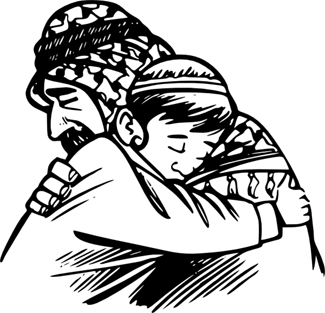 Forgiveness author, Smedes, quotes,
Forgiveness author, Smedes, quotes,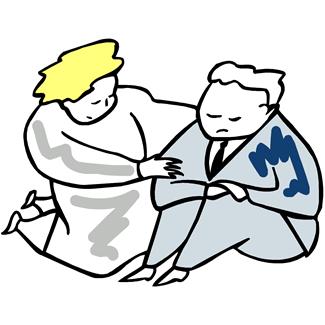
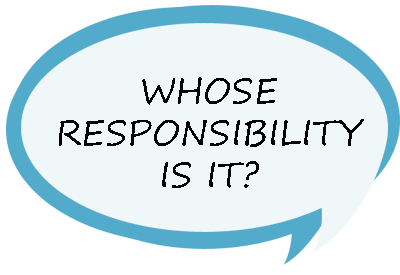 As we all know, we feel more than one thing at once, such as anger and vulnerability or happiness and confidence. Next to these emotions, we place responsibility for our being hurt on someone; often we put it on ourselves. Other times, we put it on the person or group who created the hurtful situation.
As we all know, we feel more than one thing at once, such as anger and vulnerability or happiness and confidence. Next to these emotions, we place responsibility for our being hurt on someone; often we put it on ourselves. Other times, we put it on the person or group who created the hurtful situation.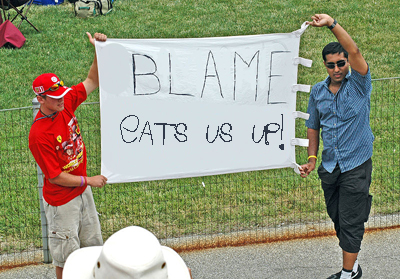 The reason it’s so important to forgive is because blame eats us up. We may think that if we mortally hurt the responsible person, we will be healed. This is one of our baser instincts that is worth looking at. It’s not legal to wound someone, so it’s not a solution. It’s not moral to wound someone. It’s not wise to stoop to the bad behaviors of others. This is where forgiveness comes in.
The reason it’s so important to forgive is because blame eats us up. We may think that if we mortally hurt the responsible person, we will be healed. This is one of our baser instincts that is worth looking at. It’s not legal to wound someone, so it’s not a solution. It’s not moral to wound someone. It’s not wise to stoop to the bad behaviors of others. This is where forgiveness comes in.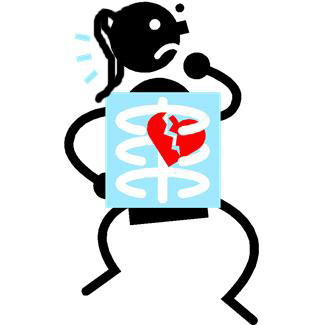 When people lash out and hurt us, they are insecure, self-absorbed, immature, impatient, fearful and hurt from a broken heart. They have become this way because someone has taken a part of their life, and they have not been able to forgive it. Do they always know it? No. In the odd cases where this is not the case, the individual is usually broken in some other way.
When people lash out and hurt us, they are insecure, self-absorbed, immature, impatient, fearful and hurt from a broken heart. They have become this way because someone has taken a part of their life, and they have not been able to forgive it. Do they always know it? No. In the odd cases where this is not the case, the individual is usually broken in some other way.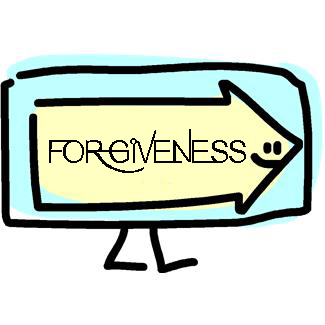 ere are some action steps that may lead us to begin the path of forgiveness. It is not impossible, no matter what it feels like. It’s like any other habit that requires a starting point and constant repetition. In the spirit of any holiday that may have to do with forgiveness, these action steps may be surprisingly useful.
ere are some action steps that may lead us to begin the path of forgiveness. It is not impossible, no matter what it feels like. It’s like any other habit that requires a starting point and constant repetition. In the spirit of any holiday that may have to do with forgiveness, these action steps may be surprisingly useful.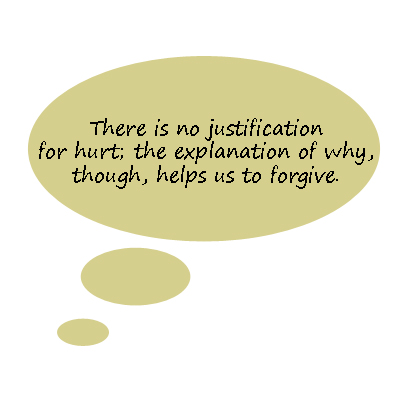
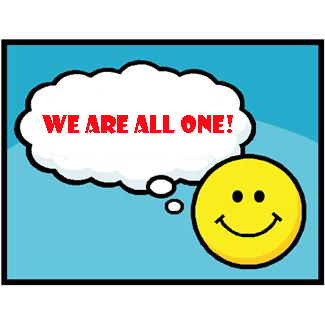

 “Speak out,”
“Speak out,”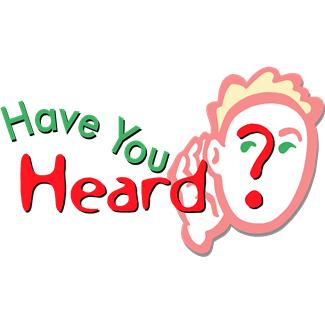 What transpired for various reasons has been a culture of speakers with no solutions, many just “orating for ego” (good T-shirt). Since there has not been a focus solving vs. complaining in modern times, it is more common to hear groups of complainers than groups of problem solvers. Plus, it’s more difficult to create than to condemn (another good T-shirt, “create, don’t condemn”).
What transpired for various reasons has been a culture of speakers with no solutions, many just “orating for ego” (good T-shirt). Since there has not been a focus solving vs. complaining in modern times, it is more common to hear groups of complainers than groups of problem solvers. Plus, it’s more difficult to create than to condemn (another good T-shirt, “create, don’t condemn”).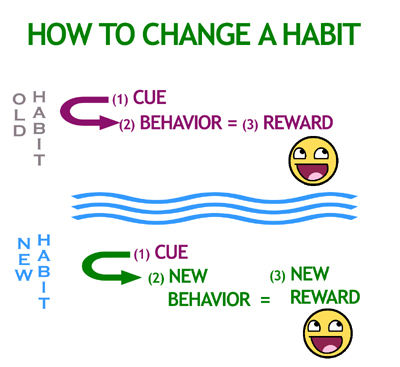 In order to solve vs. complain, we follow the process for any habit change: cue, replace the old action, reward.
In order to solve vs. complain, we follow the process for any habit change: cue, replace the old action, reward.
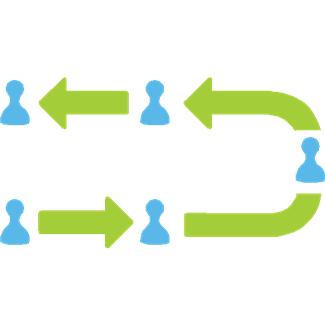
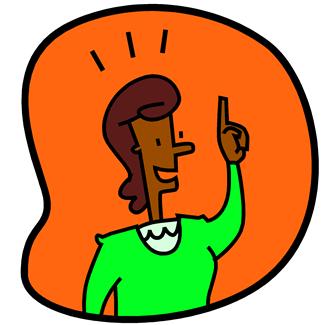 Now that we are evolved enough to understand this, it is time to consider the solution process with every speech. We may have to change our habit, if we are used to being critical, not constructive. We can certainly slap the wrist of education for lack of emphasis on oration without solution. And we can change how we educate from now on.
Now that we are evolved enough to understand this, it is time to consider the solution process with every speech. We may have to change our habit, if we are used to being critical, not constructive. We can certainly slap the wrist of education for lack of emphasis on oration without solution. And we can change how we educate from now on.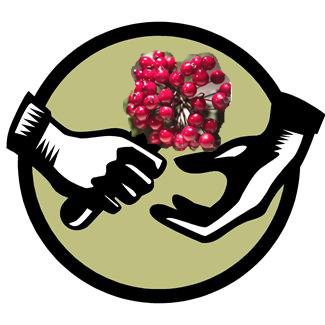
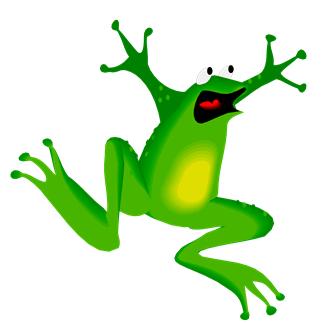 I saw a photo and exercise routine one of my (actual) friend’s shared on a social networking site. My friend is an avid athlete and 30-year yogi, which means she is strong and fit. She communicates with many people who are also strong and fit. So when she shared a plank photo and instructions for a plank exercise, starting with 20 seconds per day, she was probably directing it to the fit crowd. I immediately responded to her post with an
I saw a photo and exercise routine one of my (actual) friend’s shared on a social networking site. My friend is an avid athlete and 30-year yogi, which means she is strong and fit. She communicates with many people who are also strong and fit. So when she shared a plank photo and instructions for a plank exercise, starting with 20 seconds per day, she was probably directing it to the fit crowd. I immediately responded to her post with an  Most people are attracted to an interesting workout photo that gets passed around. What was missing, and I’m not pointing fingers, was a super big warning sign. Having owned an active martial arts school for over 15 years, I have heard many stories about injury due to improper workout. I have helped show many a newbie student why proper alignment is everything and that haste can cost precious training time as we heal from beginner, didn’t-follow-directions injuries.
Most people are attracted to an interesting workout photo that gets passed around. What was missing, and I’m not pointing fingers, was a super big warning sign. Having owned an active martial arts school for over 15 years, I have heard many stories about injury due to improper workout. I have helped show many a newbie student why proper alignment is everything and that haste can cost precious training time as we heal from beginner, didn’t-follow-directions injuries.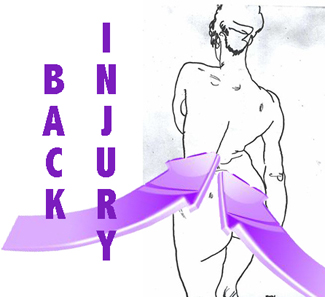 It is extremely easy to hurt the back doing the plank exercise, even though it is a wonderful technique if we have the abs for it. It’s whether or not they are strong enough to hold our entire body upon command. And that is what today’s exercise is about. Back Injury
It is extremely easy to hurt the back doing the plank exercise, even though it is a wonderful technique if we have the abs for it. It’s whether or not they are strong enough to hold our entire body upon command. And that is what today’s exercise is about. Back Injury Most of us want efficiency and want the shortest road toward what we consider perfection that we can take. That means we would like to bypass any frills and get right to the real work. Yet, some exercises, worldwide, put, at least, 50% fluff in them.
Most of us want efficiency and want the shortest road toward what we consider perfection that we can take. That means we would like to bypass any frills and get right to the real work. Yet, some exercises, worldwide, put, at least, 50% fluff in them.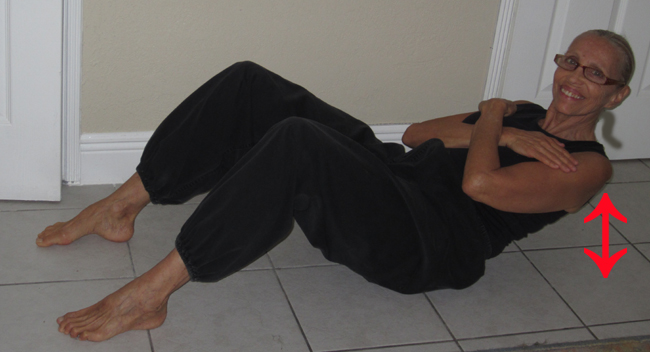
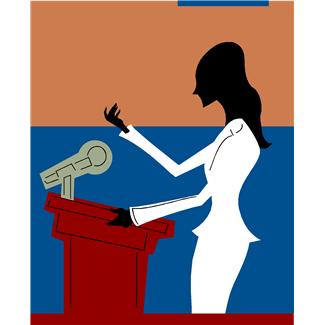
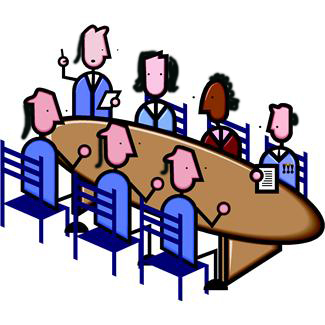
 “Drugs are tested by the people who manufacture them, in poorly designed trials, on hopelessly small numbers of weird, unrepresentative patients, and analyzed using techniques which are flawed by design, in such a way that they exaggerate the benefits of treatments.”
“Drugs are tested by the people who manufacture them, in poorly designed trials, on hopelessly small numbers of weird, unrepresentative patients, and analyzed using techniques which are flawed by design, in such a way that they exaggerate the benefits of treatments.”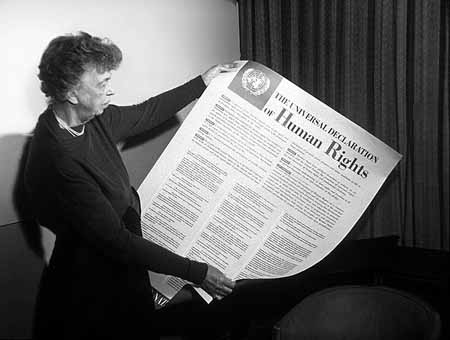 What Henry I. Miller says in his Forbes article, taken from his experience as an FDA medical officer, is that many drug studies that are not published are not negative but inconclusive. What I say is there should be some sort of very accessible bank to everyone, patients, friends of patients and medical personnel, alike, with all study results, so that those who are evaluating a drug, whether taking it or prescribing it, can make the most informed decision based upon all previous experience that anyone has had with it, regardless of why its results may not have been published.
What Henry I. Miller says in his Forbes article, taken from his experience as an FDA medical officer, is that many drug studies that are not published are not negative but inconclusive. What I say is there should be some sort of very accessible bank to everyone, patients, friends of patients and medical personnel, alike, with all study results, so that those who are evaluating a drug, whether taking it or prescribing it, can make the most informed decision based upon all previous experience that anyone has had with it, regardless of why its results may not have been published.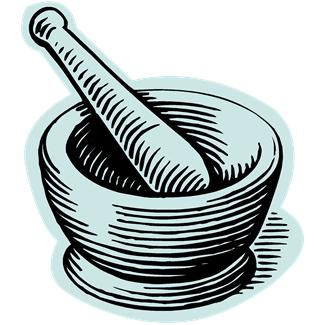 make as informed decision as possible about any drug or treatment with the transparency factor in place.
make as informed decision as possible about any drug or treatment with the transparency factor in place. This reminds me of the waiver to a clinical trial I considered. One of the questions they asked is,
This reminds me of the waiver to a clinical trial I considered. One of the questions they asked is,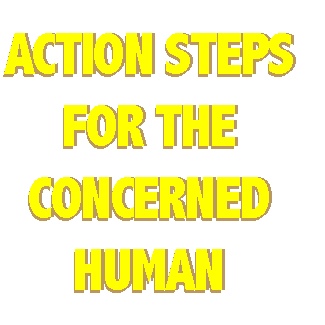 1)
1) In 2007, the FDA Amendment Act required all trials of any drug or device must be registered. Also, for a drug to be approved, its results must be posted to clinicaltrials.gov within a year of the end of the trial.
In 2007, the FDA Amendment Act required all trials of any drug or device must be registered. Also, for a drug to be approved, its results must be posted to clinicaltrials.gov within a year of the end of the trial.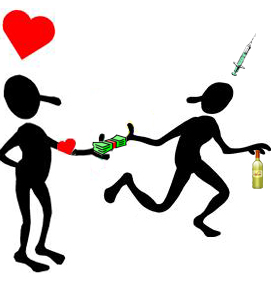 According to the dictionary, an enabler is a person who makes something possible. In the habit sense, it is a person who assists a habitual behaviorist to get her reward from some negative behavior.
According to the dictionary, an enabler is a person who makes something possible. In the habit sense, it is a person who assists a habitual behaviorist to get her reward from some negative behavior.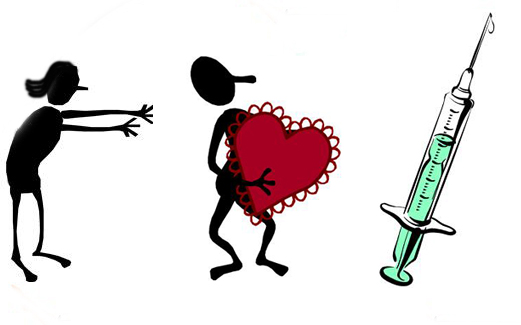
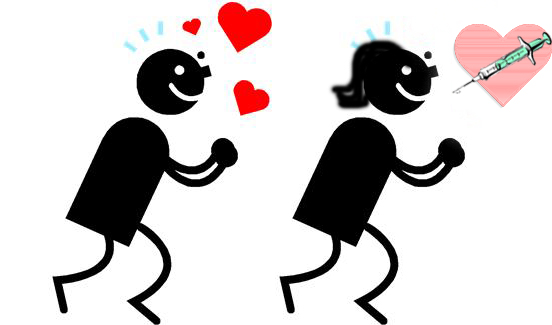
 In the same way that some cultures send a young person out to prove adulthood, we must allow our loved ones to fend for themselves or work on themselves, or they will never prove themselves to themselves. If we want to save ourselves, we must, in turn, remove the magnetic pull they have on us and let go, if we are to find our own way.
In the same way that some cultures send a young person out to prove adulthood, we must allow our loved ones to fend for themselves or work on themselves, or they will never prove themselves to themselves. If we want to save ourselves, we must, in turn, remove the magnetic pull they have on us and let go, if we are to find our own way.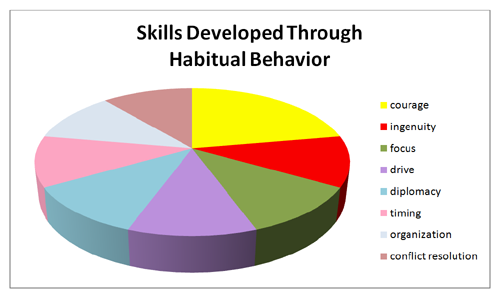
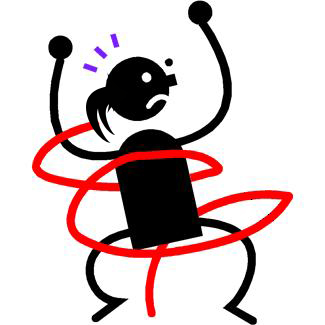 Let’s define habitual behavior as a pattern of action that follows an emotional and/or physical craving that leads to some type of internal intake or ingestion, tick, movement, series of actions, that takes place several times a day, once daily or several times a week, and that, when removed without replacement, causes psychic or physical reaction that can be severely painful. When we change the habit, we actively divert our own attention from the expectation of the old reward we couldn’t live without using the same skill set we created in developing the original habitual behavior; this is how we form a new one.
Let’s define habitual behavior as a pattern of action that follows an emotional and/or physical craving that leads to some type of internal intake or ingestion, tick, movement, series of actions, that takes place several times a day, once daily or several times a week, and that, when removed without replacement, causes psychic or physical reaction that can be severely painful. When we change the habit, we actively divert our own attention from the expectation of the old reward we couldn’t live without using the same skill set we created in developing the original habitual behavior; this is how we form a new one.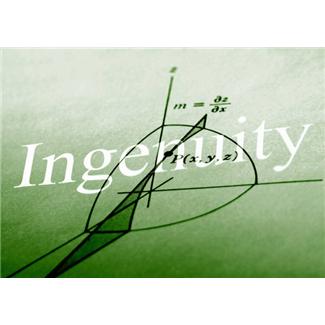 we have ingenuity enough to have devised a way to live with our habitual behavior in our lives,
we have ingenuity enough to have devised a way to live with our habitual behavior in our lives,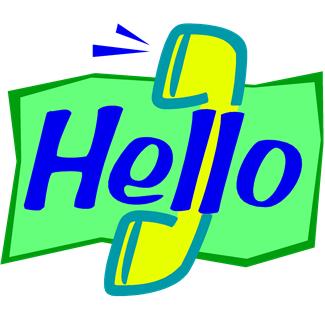
 Most of the time, we develop habitual behavior because we experience grief, anger or limited self-esteem. These can come from abuse, crisis, death, sickness and whatever our mind conjures, since feelings are irrational and show up when they show up. Since we have a myriad of valuable skills from our habitual behavior, we are worthy, since worth is calculated by our collection of respectable, attention-getting skills.
Most of the time, we develop habitual behavior because we experience grief, anger or limited self-esteem. These can come from abuse, crisis, death, sickness and whatever our mind conjures, since feelings are irrational and show up when they show up. Since we have a myriad of valuable skills from our habitual behavior, we are worthy, since worth is calculated by our collection of respectable, attention-getting skills.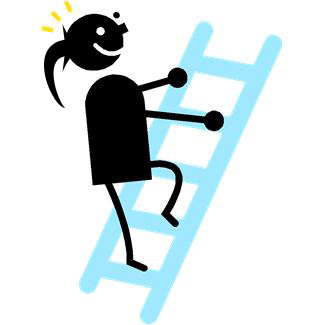
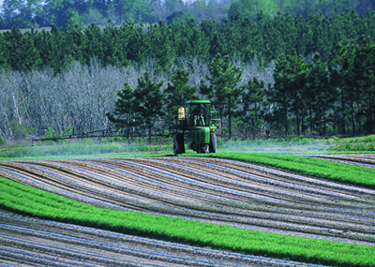 The Environmental Protection Agency (epa.gov) regulates pesticides, but the amounts it allows in our fruits and vegetables is not so easy for the lay person to evaluate. Partly because we don’t have the time to look up the more than 1055 approved pesticides in use in the US and partly because the EPA is not offering the easiest chart for consumers. Agricultural Pesticides
The Environmental Protection Agency (epa.gov) regulates pesticides, but the amounts it allows in our fruits and vegetables is not so easy for the lay person to evaluate. Partly because we don’t have the time to look up the more than 1055 approved pesticides in use in the US and partly because the EPA is not offering the easiest chart for consumers. Agricultural Pesticides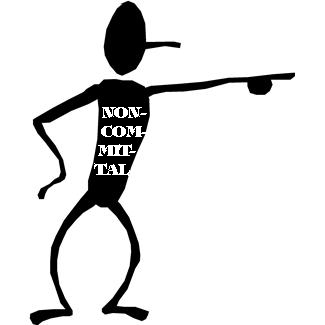
 Whatsonmyfood.org gives us some excellent information about the presence of pesticides on foods. It takes its info from the US Department of Agriculture, Pesticide Data Program, currently using 2005 data. For example, it lists that blueberries have a particular percentage of all blueberries in the US, on average, have pesticides A, B, C, D, E, F, G, H, I, J, K, L, M, N, O, P, Q, R, S, T, U, V, W, X, Y, Z, AA, BB, CC, DD, EE, FF, GG, HH, II, JJ, KK, LL, MM, NN, OO, PP, QQ, RR, SS, TT, UU, VV, WW, XX and YY present. It would be great if we could easily find a table showing the EPA tolerances (amount of pesticides that are permitted to be present and still be safe for consumption) for each of those pesticides.
Whatsonmyfood.org gives us some excellent information about the presence of pesticides on foods. It takes its info from the US Department of Agriculture, Pesticide Data Program, currently using 2005 data. For example, it lists that blueberries have a particular percentage of all blueberries in the US, on average, have pesticides A, B, C, D, E, F, G, H, I, J, K, L, M, N, O, P, Q, R, S, T, U, V, W, X, Y, Z, AA, BB, CC, DD, EE, FF, GG, HH, II, JJ, KK, LL, MM, NN, OO, PP, QQ, RR, SS, TT, UU, VV, WW, XX and YY present. It would be great if we could easily find a table showing the EPA tolerances (amount of pesticides that are permitted to be present and still be safe for consumption) for each of those pesticides. The Environmental Working Group has created a consumer guides that lists which top fruits and veggies have the most and least pesticides so that we can choose how to spend our money and ingest fewer pesticides. This group is the environmental health and advocacy organization whose work resulted in the Food Quality Protection Act in 1996.
The Environmental Working Group has created a consumer guides that lists which top fruits and veggies have the most and least pesticides so that we can choose how to spend our money and ingest fewer pesticides. This group is the environmental health and advocacy organization whose work resulted in the Food Quality Protection Act in 1996.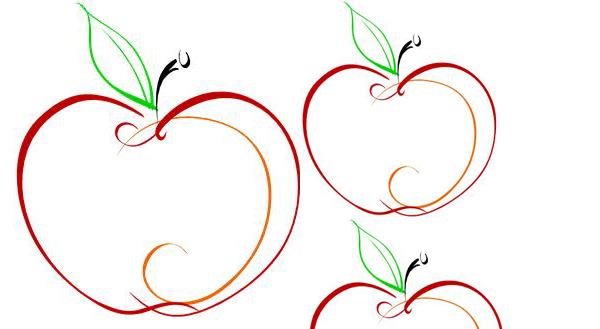 APPLES
APPLES


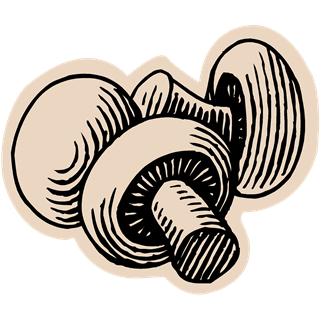
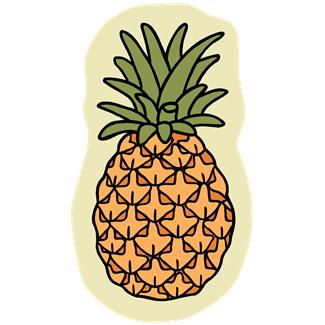
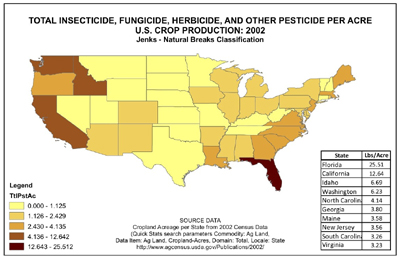 Pesticides are here, both on organic and conventional produce. Synthetic pesticides can burn the mouth, lungs, the respiratory system, cause nerve damage, cause skin to peel or change color, cause temporary blindness when exposure is high. Hopefully, we are never exposed to enough at once to cause anything like this. But it makes us think about how safe pesticides are in smaller quantities on our food.
Pesticides are here, both on organic and conventional produce. Synthetic pesticides can burn the mouth, lungs, the respiratory system, cause nerve damage, cause skin to peel or change color, cause temporary blindness when exposure is high. Hopefully, we are never exposed to enough at once to cause anything like this. But it makes us think about how safe pesticides are in smaller quantities on our food.
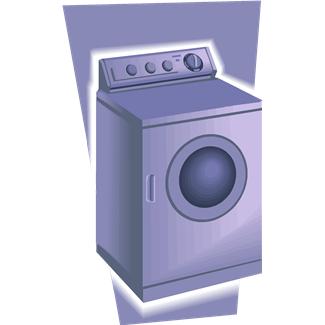 Animal protein is known to clog arteries. Plant-based is not known to do this.
Animal protein is known to clog arteries. Plant-based is not known to do this.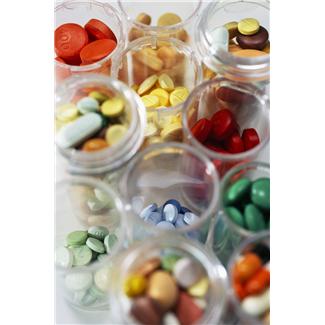 If people are healthier and use less medical services, less pharmaceuticals; they will reduce their own personal costs. They will also reduce the pharmaceutical and medical equipment manufacturing rate as well as the distribution and transportation costs which are 1.5 to 4.5% of their sale price, according to Transportation Journal, Jan., 2005.
If people are healthier and use less medical services, less pharmaceuticals; they will reduce their own personal costs. They will also reduce the pharmaceutical and medical equipment manufacturing rate as well as the distribution and transportation costs which are 1.5 to 4.5% of their sale price, according to Transportation Journal, Jan., 2005.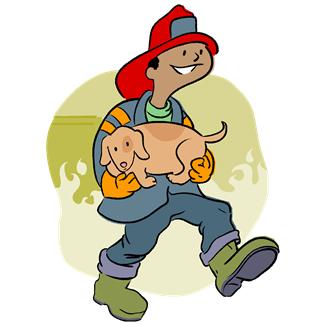 If we could avoid running over a dog or cat in the road, would we do it? Of course, we would. In the same way, if we transitioned to a plant-based diet, we would be doing just that. We would automatically be eliminating the need for the animal industry to replace food we just ate. This means we would slow down the process of using animals for food, which, more times than we would like to think, abuses, terrorizes and mutilates animals. Although there are hard, honest workers in the animal food industry, if there are other choices, can we make them?
If we could avoid running over a dog or cat in the road, would we do it? Of course, we would. In the same way, if we transitioned to a plant-based diet, we would be doing just that. We would automatically be eliminating the need for the animal industry to replace food we just ate. This means we would slow down the process of using animals for food, which, more times than we would like to think, abuses, terrorizes and mutilates animals. Although there are hard, honest workers in the animal food industry, if there are other choices, can we make them?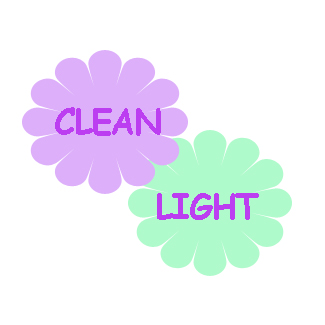 Another reason for considering a plant-based diet (or its direction) is personal to me. Therefore, please consider this in evaluating it.
Another reason for considering a plant-based diet (or its direction) is personal to me. Therefore, please consider this in evaluating it.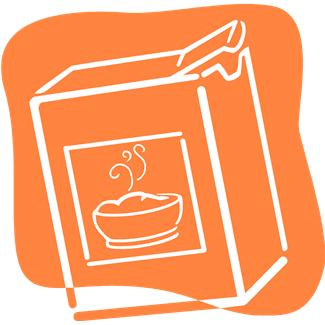 2)
2)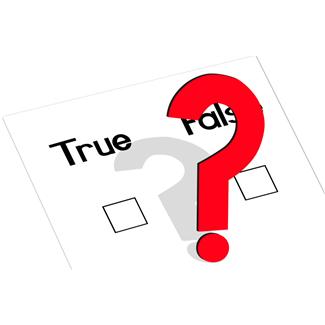
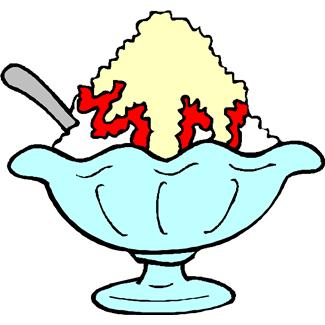 This makes complete sense from a visceral point of view. Let’s say we have not had cake, cookies, candy, ice cream for a while because we always eat too much or because we have heard sugar is bad. What happens when we have some?
This makes complete sense from a visceral point of view. Let’s say we have not had cake, cookies, candy, ice cream for a while because we always eat too much or because we have heard sugar is bad. What happens when we have some? According to some old US Department of Commerce sales reports, researched, converted to approximate consumption and infographed by Stephen Guyenet, an obesity researcher at University of Washington, B.S., biochemistry, PhD, neurophysiology, and Jeremy Landen, as of 2012, we consumed approximately 100 pounds of sugar per year. In 1822, we consumed 6.3 pounds per person per year. Another way of looking at it is that in 1822, we consumed the equivalent of a can of cola’s worth of sugar in five days. Now, we consume that number in seven hours. That’s 19 times an increase.
According to some old US Department of Commerce sales reports, researched, converted to approximate consumption and infographed by Stephen Guyenet, an obesity researcher at University of Washington, B.S., biochemistry, PhD, neurophysiology, and Jeremy Landen, as of 2012, we consumed approximately 100 pounds of sugar per year. In 1822, we consumed 6.3 pounds per person per year. Another way of looking at it is that in 1822, we consumed the equivalent of a can of cola’s worth of sugar in five days. Now, we consume that number in seven hours. That’s 19 times an increase.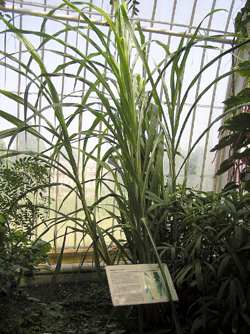 According to the FDA’s food labeling provisions, not all sugars are required to be listed. Currently, regulation 101.9(c)(6)ii requires that the sugars that must be counted within the labeling system are mono- and disaccharides. That means glucose, fructose, lactose, sucrose. All other sugars may be included voluntarily. That includes fiber and sugar alcohols such as sorbitol, xylitol, mannitol.
According to the FDA’s food labeling provisions, not all sugars are required to be listed. Currently, regulation 101.9(c)(6)ii requires that the sugars that must be counted within the labeling system are mono- and disaccharides. That means glucose, fructose, lactose, sucrose. All other sugars may be included voluntarily. That includes fiber and sugar alcohols such as sorbitol, xylitol, mannitol.
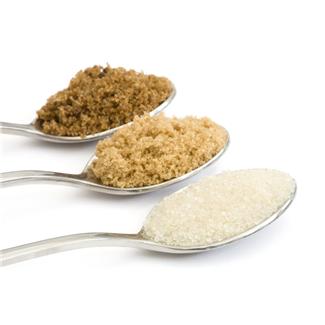 Regulation of sugar intake is good. Knowing what sugary substances we ingest is great. If we don’t stress our bodies by putting them through the sugar roller coaster, we are better off. If our bodies react poorly to high sugar intake, we can notice it. Is sugar bad for our health? It depends upon which kind of sugar, the condition of our health, how much and our lifestyle.
Regulation of sugar intake is good. Knowing what sugary substances we ingest is great. If we don’t stress our bodies by putting them through the sugar roller coaster, we are better off. If our bodies react poorly to high sugar intake, we can notice it. Is sugar bad for our health? It depends upon which kind of sugar, the condition of our health, how much and our lifestyle.





